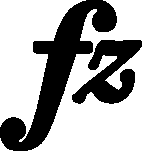



Articulation, Accents, Hairpins
|
b. 30
|
composition: Op. 10 No 2, Etude in A minor
..
In the main text we give the accent written by Chopin in FEcor. The sign was correctly recreated in FE (→GE), whereas in EE2 it was misplaced on the 4th beat of the bar, which was then revised in EE3 (→EE4), so the accents are present in both places. category imprint: Differences between sources issues: Authentic corrections of FE |
|||||||||||||||||
|
b. 31
|
composition: Op. 10 No 2, Etude in A minor
..
In the main text we give long accents written by Chopin in FEcor. Both signs were clearly distorted in finished FE (→GE,EE). category imprint: Differences between sources issues: Long accents , Inaccuracies in FE , Authentic corrections of FE |
|||||||||||||||||
|
b. 32
|
composition: Op. 10 No 2, Etude in A minor
..
The wedge written in Ap is most probably a part of Chopin's quest for an accurate way of writing down this chord – cf. the adjacent remark. category imprint: Differences between sources issues: Wedges |
|||||||||||||||||
|
b. 32
|
composition: Op. 10 No 2, Etude in A minor
..
Three accents written in Ap in bar 32 are undoubtedly short, if considering their shape. However, their position gives raise to doubts – the signs certainly do not exclusively refer to the upper voice, therefore, they fall on the 2nd, 3rd and 4th beat of the bar, where they probably concern the entire chords. However, if they concern the chords, such a position suggests their extended function, which corresponds to the definition of long accents (cf. bars 45-46). In the main text we give one category imprint: Differences between sources issues: Long accents , Inaccuracies in FE , GE revisions , EE inaccuracies , Authentic corrections of FE |
|||||||||||||||||
|
b. 33-34
|
composition: Op. 10 No 2, Etude in A minor
..
The sources differ in the range of category imprint: Differences between sources issues: Inaccuracies in FE , Errors in EE , Errors in GE , GE revisions |




 in
in 

















